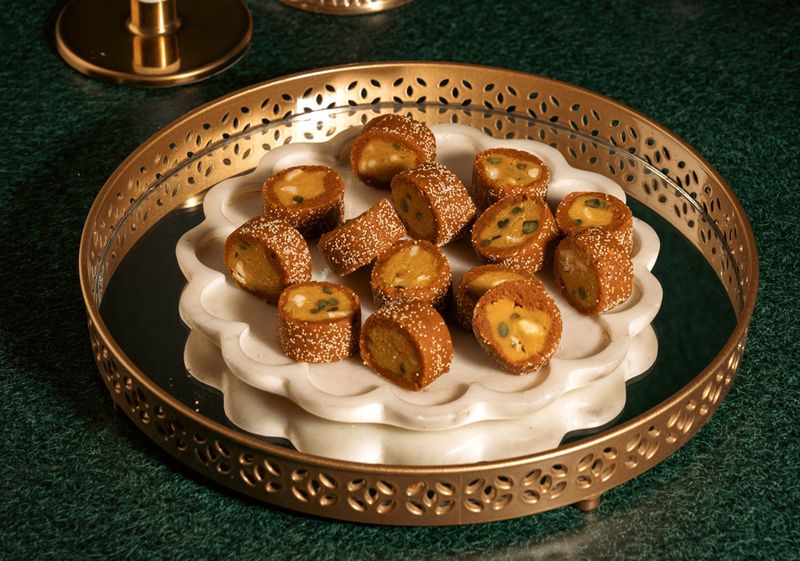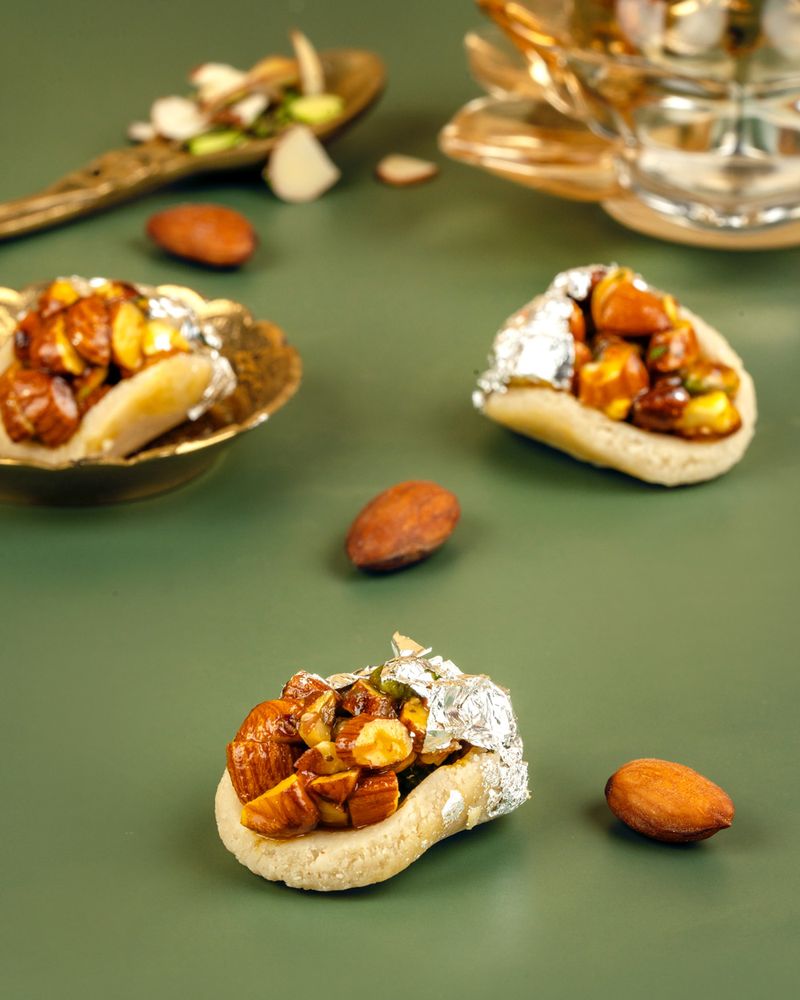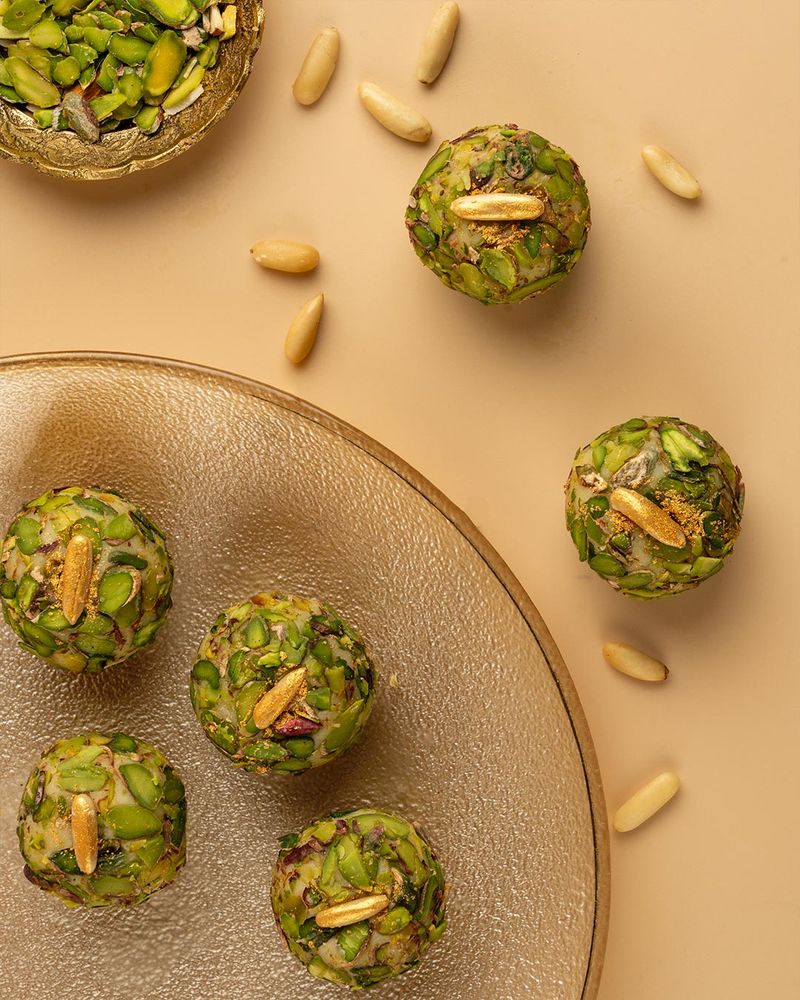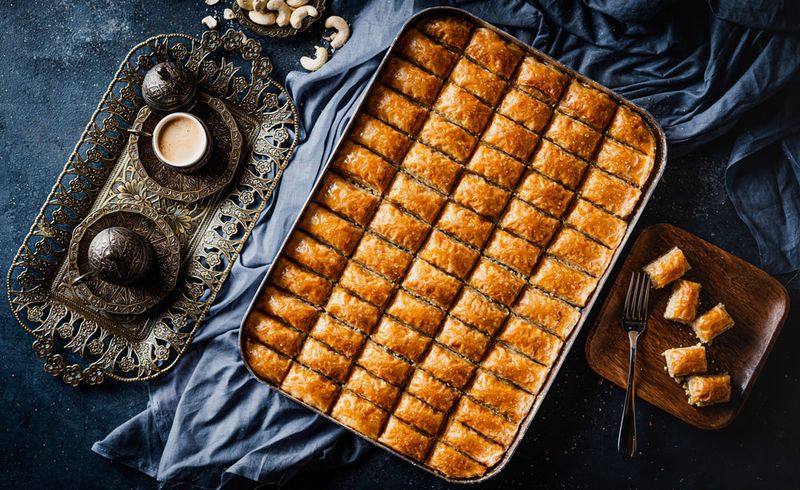We have officially entered the Indian season of festivals. After Ganesh Chaturthi, nine days of Navratri revere the Goddess ending with Dussehra on October 12, paving way for Diwali, which begins October 28.

“Dry fruits take centre stage in any Indian festival,” says Satyajit Singh, second generation of Ramas, manufacturers of gourmet and dry fruit sweets since 2000 with its first store in Santacruz, Mumbai. A star ingredient in sweet and savoury delicacies, dry fruits are also added to gift hampers and offerings to kick off the festivity indulgences. “We consume dry fruits rounds the year, but they hold a special significance during festivals as they represent health and prosperity. Not everyone could not afford it in the earlier times, thus it was considered a status statement,” says Singh.
For Navratri, the sweets get a miniature avatar. “Kaju Katli, for example, becomes a mini-Kaju Katli – so people can feed each other and when served for prasad, it is easier to consume a full piece. Almond and cashew are warmth inducing, which is why Diwali sees a spike in its demand. Raisins and figs are a great digestive, and cooling, so consumed in spring during Holi. Traditionally, they were exchanged depending on the season.
Many dry fruits, many avatars
Girish Nayak, chief mithaiwala at Bombay Sweet Shop, says, “Dry fruits signify value as they are expensive. Way back in tradition, dry fruits were not easily available market. Those who got their hands on them and could afford it, earned a status of royalty. Thus, till date, they symbolise abundance, good fortune, prosperity.”

This year, at Bombay Sweet Shop, he is pairing unique flavours to age-old classics. Candied orange meets kaju katli to make a Kaju Orange roll, while Anjeer Kaju roll is a take on the classic kaju katli enhanced with figs, saffron, pistachios, and poppy seeds. “Cashew nut is a very versatile ingredient and a popular choice, thanks to its long shelf life. Dry-fruit mithais are a healthier option compared to ghee-based sweets. While people will indulge in fried savoury foods during festivals, a healthy mithai compensates for it,” says Nayak.

The vegan Nutty Date Barfi is one example. It is made using a variety of dry fruits, including badam, cashew nuts, pistachio, anjeer and dates. “We make it using coconut sugar and jaggery,” he says.
New-age presentations

Offering nuts to guests is an age-old gesture showcasing respect, hospitality and honour, too, says Siddharth Mathur, owner of KHOYA in Delhi. “Today, consumers bridge tradition with modern hospitality, cherished for their nutrition and taste. Dry fruits have become key ingredients and replacements in vegan and gluten-free desserts to fold in natural sweetness and texture. They’re also popular in gourmet savoury dishes, paired with exotic spices and superfoods as nutrient-rich snacks. Consumers are also prioritizing sustainable and organic sourcing,” says Mathur.
This year, they have introduced Kaju Patisa, Gold Pista Katli, Chilgoza Ladoo, and Badam Tokri as signature dry fruit mithais. “We create exotic pairings with a balanced sweetness. This allows us to maintain authenticity while adapting to evolving tastes,” he says.

Desi global palates

Hurrem’s Chef Yetkin compares India, where each region has its own unique way of using dry fruits, to his hometown Turkey. “I enjoy desserts like Kedayif rolls and of course Baklava back home. It’s fascinating to see how dry fruits bridge cultures and enhance celebrations globally. Use of dry fruits has expanded beyond traditional sweets. While they were once mainly reserved for festive occasions, now they’re embraced in everyday cooking, gourmet dishes, and even health snacks. Chefs are getting creative, incorporating them into salads, smoothies, and innovative desserts. This evolution showcases their adaptability and growing popularity,” says Yetkin, adding, “One of my favourites is our signature Baklava, which features a delightful mix of pistachios and other dry fruits. The dry fruits add a rich, nutty flavour and a satisfying crunch of the phyllo that contrasts beautifully with the syrupy sweetness.”

Each dry fruit brings its unique character to a dish. “Almonds add a mild sweetness and crunch, while cashews bring creaminess and richness. Pistachios are vibrant and nutty, offering both flavour and colour, and raisins add a chewy sweetness that can balance out richer elements. This variety allows for a beautiful layering of flavours and textures, enhancing the overall experience,” explains Yetkin.

Demand and supply
Singh leaves us with an interesting nugget about cashew nuts. “We get them from Konkan region of India, near Goa. Now, cashew is also grown abroad, in Nigeria. Owing to the climatic condition of India, cashews here are very sweet. But the ones exported, look bigger. But in terms of taste, they may taste very bland. In our business, we get two types of buyers: one, who wants to gift something that looks appealing and the other, who wants it to taste best,” says Singh.


